Lyme disease—caused by the bacterium Borrelia burgdorferi and often transmitted through tick bites—has become increasingly common in recent years, especially in North America and parts of Europe. While antibiotics are often used in the early stages, many people experience lingering symptoms that Western medicine struggles to fully resolve. This is where Traditional Chinese Medicine (TCM) offers a powerful, holistic path to recovery.
☯️ Understanding Lyme Disease Through the Lens of TCM
In Chinese medicine, Lyme disease is not just a bacterial infection—it is seen as a pathogenic invasion that disrupts the internal balance of Qi (vital energy), Blood, and organ function. The tick bite is considered a form of “external evil” (邪气 xié qì), similar to how wind, dampness, heat, or cold can invade the body.
Depending on the stage and symptoms of the disease, Lyme may manifest in patterns such as:
-
Damp-Heat Obstruction: Common in early stages with symptoms like joint pain, fatigue, low-grade fever, and swollen lymph nodes.
-
Wind-Damp Bi Syndrome: When pain migrates through the joints and muscles, accompanied by stiffness and heaviness.
-
Qi and Blood Deficiency: In the later stages, after prolonged illness or antibiotic treatment, fatigue, poor sleep, brain fog, and weakness may dominate.
-
Liver-Kidney Yin Deficiency: For those with chronic neurological symptoms, dizziness, tinnitus, or cognitive decline.
🍵 Key Chinese Herbal Formulas for Lyme Support
TCM doesn’t treat the “bacteria” directly—it treats the terrain, the body's ecosystem that the bacteria disrupt. Herbal medicine is tailored to the individual's constitution and current imbalance.
Some commonly used formulas include:
1. Huang Qin Tang (Scutellaria Decoction)
Used when Damp-Heat and inflammation dominate. It can help manage fevers, digestive upset, and a heavy body sensation.
2. Du Huo Ji Sheng Tang
A classic for Wind-Damp Bi syndrome, especially in chronic joint pain or arthritis-like symptoms. It nourishes Liver and Kidney while expelling dampness.
3. Bu Zhong Yi Qi Tang
To replenish Qi after long illness or fatigue. Great for post-treatment recovery, especially if symptoms worsen with exertion.
4. Gui Pi Tang
For fatigue, insomnia, anxiety, and brain fog — signs of Qi and Blood deficiency affecting the Heart and Spleen.
5. Zhi Bai Di Huang Wan
A yin-nourishing formula often used when there's night sweats, low-grade fevers, and neurological symptoms due to Liver and Kidney Yin deficiency.
Herbs like Huang Qin (Scutellaria), Chuan Xiong (Ligusticum), Yi Yi Ren (Coix seed), and Fang Feng (Saposhnikovia) may also be used in customized combinations, depending on your symptoms.
🌬️ Acupuncture for Lyme Relief
Acupuncture helps regulate the nervous system, reduce inflammation, and balance immune function. Specific points can be used to:
-
Alleviate joint and nerve pain
-
Improve sleep and energy
-
Reduce brain fog and cognitive fatigue
-
Calm anxiety and regulate mood
-
Restore gut function after antibiotic use
Treatments are often weekly or biweekly, and are adapted to your healing stage.
🌱 Lifestyle Tips from the Daoist Tradition
Chinese medicine emphasizes living in harmony with nature. For Lyme recovery, that means:
-
Rest deeply — your body heals best when the nervous system is calm
-
Avoid cold, raw, or greasy foods that burden the Spleen
-
Warm, cooked meals like congee, bone broth, and herbal soups support Qi
-
Spend time in the sun and fresh air to support Wei Qi (defensive energy)
-
Practice gentle movement like Qi Gong or Tai Chi to restore energy flow
🔬 Western Medicine vs TCM: Why Integration Works Best
Antibiotics are necessary in the early phase of Lyme disease. But once the acute phase passes, many patients report persistent symptoms—called Post-Treatment Lyme Disease Syndrome (PTLDS). Chinese medicine is not an alternative to antibiotics in emergencies—it’s an essential complement for long-term recovery.
Integrating TCM with Western approaches allows for a more personalized, whole-person healing process that addresses both the visible infection and the invisible aftermath on the body, mind, and spirit.
Lyme disease can feel like an overwhelming and mysterious condition. But with the wisdom of Chinese medicine, you don’t have to face it alone—or feel like your symptoms are “in your head.” Whether you’re in the acute phase or months into lingering fatigue and pain, TCM offers a grounded, individualized roadmap for deep recovery.
As a Chinese doctor and energy healer, I’ve helped many clients with complex chronic conditions like Lyme. If you feel stuck, fatigued, or unheard—there is another way forward.
✨ Healing is possible when the body and spirit are treated as one.
Need personalized support for Lyme or long-term fatigue?
I offer remote consultations and customized herbal + energy wellness plans.
Let’s bring your body back to harmony.
References
CDC. Lyme Disease Data and Statistics. 2023.
Aucott JN. Post-Treatment Lyme Disease Syndrome. *Infect Dis Clin North Am*. 2015.
Zhang L. TCM diagnostics for infectious diseases. *J Tradit Chin Med*. 2018.
Steere AC. Lyme disease: A review of inflammation. *N Engl J Med*. 2018.
Prins JB. Chronic fatigue syndrome mechanisms. *Lancet*. 2006.
Li X. Herbal medicine for chronic diseases. *Chin J Integr Med*. 2020.
Zhao Q. Scutellaria baicalensis: Anti-inflammatory effects. *Phytomedicine*. 2019.
Chen Y. Du Huo Ji Sheng Tang for arthritis. *J Ethnopharmacol*. 2017.
Zhang H. Astragalus for immune support. *Front Pharmacol*. 2021.
Liu J. Gui Pi Tang for cognitive health. *J Tradit Chin Med*. 2016.
Wang Z. Rehmannia for neuroprotection. *Neuropharmacology*. 2018.
Huang Y. Coix seed pharmacology. *Chin Med*. 2020.
Zhang XC. Acupuncture for chronic pain. *Pain*. 2019.
Yin X. Acupuncture for anxiety and sleep. *Front Psychiatry*. 2020.
Segerstrom SC. Stress and immunity. *Psychol Bull*. 2004.
Conlon MA. Diet and gut health. *Nutr Rev*. 2016.
Wacker M. Vitamin D and immunity. *Nutrients*. 2013.
Wang C. Tai Chi for chronic illness. *Am J Med*. 2010.
Wormser GP. Lyme disease treatment guidelines. *Clin Infect Dis*. 2006.
Rebman AW. PTLDS mechanisms. *Front Med*. 2021.



